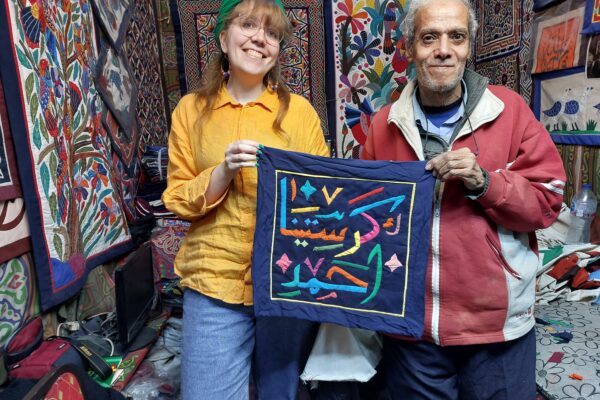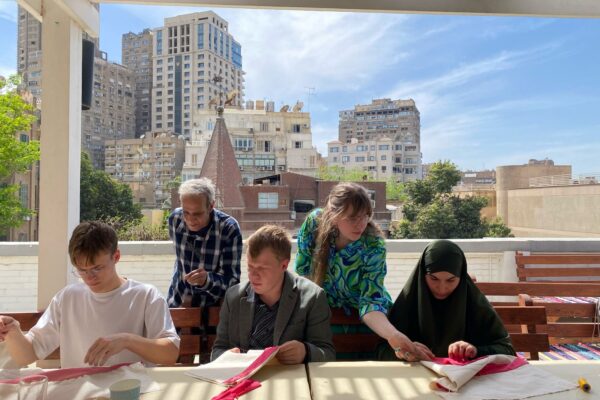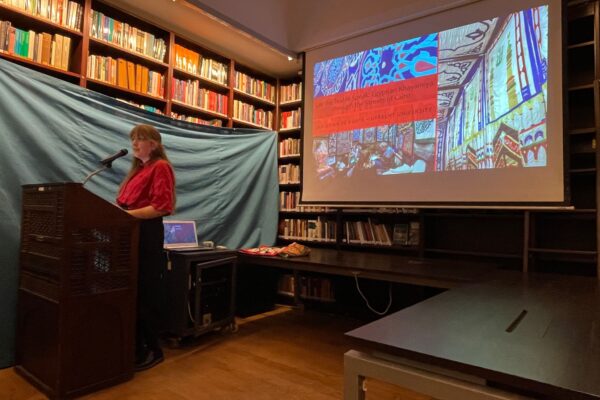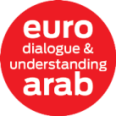Christina de Korte in Egypt
Would you also like to benefit from our Travel Grants? Our applications are open all year! Find out more about the application procedure and criteria here
In 2022 I came to Egypt for the first time to follow the Middle Eastern Bachelor Program at the Netherlands Flemish Language Institute in Cairo (NVIC). After completing my studies at the NVIC, I stayed in Egypt for four more months to dive into local techniques and work as an artist in residence. I kept finding a typical Egyptian textile that was asking for my attention, namely khayamiya. Khayamiya – derived from the Arabic word for tent, namely khayma – is an appliqué technique, predominantly used for making big handmade tents. Nowadays, tents made of khayamiya are still used for different purposes, for example, during events such as weddings and funerals, or iftars during Ramadan. The technique is also used on a smaller scale for objects such as pillow covers, and can be created through other means, such as machine-sewn or (digitally) printed.
From January 2025 until the beginning of May 2025 I returned to Egypt to conduct research for my research master’s thesis Let the Textile Speak: Egyptian Khayamiya Through the Streets of Cairo. Through the support of the travel grant of the Lutfia Rabbani Foundation, I was able to cover my travel costs to Egypt, but also the travel expenses during my stay. In this research, I focus on Egyptian khayamiya and its contemporary usages before and during Ramadan. By following the routes of various types of khayamiya through Cairo’s streets and taking courses in the Street of the Tentmakers to learn the technique, I analyse how khayamiya dresses up the city, and invites people to interact with it. This interdisciplinary approach between textiles, heritage, material religion, and (art-)history makes it possible to let the textile speak.
In addition to delving into collecting the data for my research, I was able to take my Egyptian-Arabic to another level since most of my respondents were Arabic speakers. Although my Arabic is not fluent, I was able to talk with many tentmakers, farrashin (the people who rent and build the tents), and other people related to khayamiya. In my experience, Egyptians create a very welcoming environment to learn Arabic, since the majority of people are extremely patient and willing to help.
It was an unforgettable experience to be in Egypt while seeing the preparations for Ramadan and the whole month of Ramadan. My enthusiasm for Egypt and khayamiya is not finished after this research period in Cairo, and I hope to return soon to extend this research by looking at the other usages of the textile that I encountered. During my stay, I was able to give two lectures and a workshop at the NVIC where I was working as a guest researcher. In the coming period, I will continue with these activities in the Netherlands on different occasions to share what I learned in the Street of the Tentmakers from my khayamiya teacher Ahmed, and share my enthusiasm for khayamiya and Egypt!




